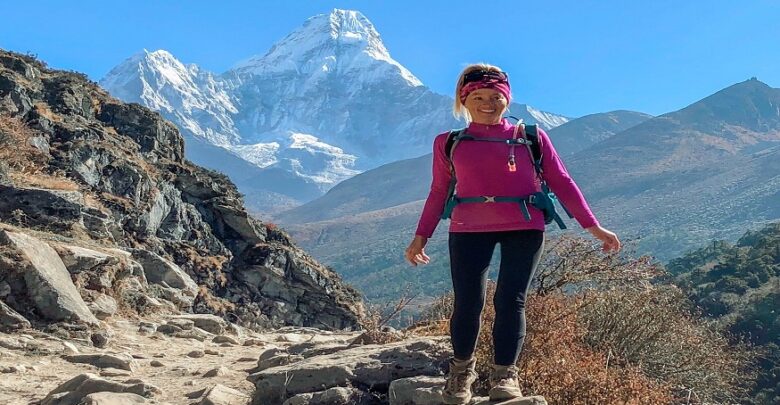How to Get to Lukla: Flights, Delays & Alternatives

The Journey to Lukla: The Gateway to Everest Base Camp Treks. For the vast majority of trekkers, the trek begins with a flight from Kathmandu to a town in the Khumbu region of Nepal called Lukla. The airport, called Tenzing-Hillary Airport, is notoriously difficult, and flights can be extremely erratic when the weather is bad. These flights fly from Tribhuvan International Airport in Kathmandu, and are usually operated by Yeti Airlines, Summit Air, and Sita Air.
The flight to Lukla itself is short, about 30 to 40 minutes, providing trekkers with incredible views of the Himalayas from the air (on clear days, Mount Everest is even visible). The weather can be very unpredictable in the region, but that sometimes results in delays and cancellations. Flights to Lukla are scheduled mostly in the mornings when the weather tends to be calmer, but cloud cover, high winds, or poor visibility in the mountains can lead to long delays, for days at a time.
As a result, only small aircraft are allowed to land at the airport, and its runway is both short and steep, adding to the difficulty. During the usual trekking season, particularly in spring and autumn, flights can be in high demand, so flying into Nepal should be on the list of top priorities. Because the weather is not always predictable, trekkers often end up waiting for clear skies for their flights to depart, so a lot of flexibility in travel plans is needed.
Teekers are therefore advised to allocate extra time in Kathmandu, both before and after their flight to Lukla, in order to avoid stranding in Kathmandu due to flight cancellations. This buffer is to cater for any mishaps or delays in the flight network, allowing trekkers to not losing trekking days or valuable time in their trip. Flight cancellations, however, are a common topic employed by many trekkers since weather conditions are more unstable during the monsoon and winter months.
Avoiding the unpredictability of flying, albeit at the cost of time and legwork. For the adventurous, many opt to walk the 12 to 14 days from Jiri to Lukla. The trek for 7 to 10 days covers around 150 kilometers, allowing trekkers to see traditional villages, lush valleys, and terraced fields en route. This extra hike, though, should be mentioned as it adds added challenge to the trip and makes each trek to Everest Base Camp longer.
Another possibility is to fly to Phaplu instead, which is a smaller airstrip some hours away from Lukla. Flights to Phaplu are infrequent, but can be a safer and more dependable option for travelers wishing to avoid the uncertainty of flying directly to Lukla. The 3 to 4-day-long trek to Lukla can then commence from Phaplu.
Finding your way to Lukla requires patience, flexibility, and an acceptance that the weather can dictate your travel plans. Flying straight from Kathmandu or opting for another adventure to trek to Lukla, travellers require an element of adventure in the journey.
Lukla Introduction – Everest Base Camp Gateway
Mount Everest Base Camp Trek Well, Lukla is a small town in Nepal’s Khumbu region, and it is the main gateway for trekkers heading to Everest Base Camp and the surrounding areas. Lukla, located at an altitude of 2,860 meters (9,383 feet), is where most expeditions into the Everest region begin, and for trekkers, it’s typically the first point of call after getting into Kathmandu. The town is best known for Tenzing-Hillary Airport, one of the world’s most exhilarating and treacherous airports. Trekkers set out from Lukla to enjoy the journey to Everest Base Camp, through scenic Sherpa villages, lush forests, and rough Himalayan terrain. And while the town itself is small and fairly remote, it is an important hub for both trekkers and locals. Due to the extreme weather in the region, flights from Kathmandu to Lukla are known for their unpredictability. Lukla is still the gateway for all who want to trek in the Everest region.
Flight Overview: Flying to Lukla
The fastest and most popular route for trekkers to the starting point of the Everest Base Camp trek is to fly to Lukla. The flights operate out of Kathmandu’s Tribhuvan International Airport and take about 30 to 40 minutes. Flights to Lukla are made by small twin-engine planes like the DHC-6 Twin Otter or the Pilatus PC-6 Porter, which can land on the short runway of Tenzing-Hillary Airport. These flights offer spectacular aerial views of the Himalayan mountains, including Mount Everest on clear days. But the atmospheric conditions surrounding Lukla are capricious, as high-velocity winds, cloud cover, and low visibility cause such flights to be delayed or canceled. Morning flights are typically favored, as the weather tends to be clearer. The flight is fairly short, but the tough part is the weather and the elevation. It’s also important for trekkers to have a little flexibility in their travel itinerary, since flight cancellations can come at the last minute.
Airlines Flying to Lukla
There are a few airlines that operate flights between Kathmandu and Lukla, which is how trekkers can gain access to the area around Mt. Everest. Among the most prominent are Yeti Airlines, Sita Air, and Summit Air. Make: Only some domestic airlines cater to remote areas such as Lukla, providing daily services in peak trekking seasons (spring/autumn). The most reliable options, weather permitting, are Yeti Airlines and Sita Air, both of which have multiple flights daily. All flights from Kathmandu to Lukla are relatively short, with most ranging between 30 to 40 minutes. The small planes that are used to make the journey are well equipped to handle the difficult conditions of Lukla’s airport. But because of the airport’s elevation and weather conditions in the region, those flights can change or be delayed. Note: There are frequent flight cancellations in Lukla, especially during the monsoon season (June to September) and winter months. Trekkers have to book their flights well in advance and be sure to allow a few extra days in Kathmandu to prepare for any flight delays. Lukla’s unique airport has been a longtime challenge for these airlines.
Scenarios to Keep in Mind for Flight Schedules and Timing
Everest Base Camp Flight schedules to Lukla are usually weather-dependent, with flights departing from Kathmandu in the early morning, before the afternoon winds develop. Last but not least, early morning flights are preferable, since the weather around that time is mostly calmer, thus providing smoother visibility for landing. Flights are run daily by the airlines, and delays and cancellations are par for the course, considering how unpredictable the Himalayan weather can be. In peak trekking seasons (spring & autumn), flights are more frequent, but the airport can still get crowded with countless trekkers and locals flying to Lukla. Beyond that, the limited capacity on the Tenzing-Hillary Airport runway can lead to flight cancellations or rescheduling depending on availability. That said, it’s always best to book flights in advance and give yourself extra time in Kathmandu before heading to Lukla. So, most trekkers suggest adding 1-2 extra days in Kathmandu just for flight flexibility. A flexible itinerary will help you to go around wasted trekking days if your flight is delayed or canceled. But knowing that delays are part of the adventure is the key to a smooth journey to Lukla.
Lukla Airport: What to Expect
Lukla is one of the world’s most difficult landings at an airport — the Tenzing-Hillary Airport — and provides a mind-blowing beginning to the Everest Base Camp hike. The airport with a runway of just under 500 meters (1,640 feet) is at an altitude of 2,860 meters (9,383 feet), so it is a high-risk place to land, especially for small aircraft. As steeply inclined, the runway makes takeoff and landing much more complicated. The airport is subject to weather, which means delays and cancellations, especially when it’s cloudy or windy and visibility is limited in the nearby mountains. And for those who fly into Lukla, be prepared for rough landings and a bustling, remote environment upon arrival. Lukla’s tiny terminal is typically filled with trekkers, trekkers’ duffels, and local porters getting ready to move gear. There are few direct road links to the airport, but Lukla is connected to the rest of the Everest region and is the launchpad for treks to Everest Base Camp and other high-altitude points of interest. The flight, however, isn’t without its challenges, and the descent into Lukla is nothing if not a thrilling reminder that the adventure into the Himalayas has only just begun.
Flight Delays and Cancellations Flight Delays and Cancellations: Their Common Causes
Himalayan Base Camp Trek Possible answer: Flight delays and cancellations are a frequent occurrence for Lukla because of several reasons, but the foremost reason is the weather in the Himalaya mountains. Severe rain and wind can leave pilots unable to land or take off as the conditions present an increased risk of accidents. The short runway and steep incline of the airport, located at a high altitude, add challenges to flights, especially for small aircraft that are often used for the trip. While monsoon rain (June to September) and winter weather (December to February) upsets are also more common due to the prevalence of clouds and high winds. Moreover, if you travel in peak seasons, the large number of trekkers can create crowding in airports, resulting in delays. In those types of scenarios, airlines may prioritize their operations based on visibility and safe flying conditions. This has caused significant frustration among trekkers waiting for favorable weather conditions to resume, with delays of a few hours to several days on several occasions. It’s important to be flexible and ready for flight cancellations when you fly to Lukla.
Because the weather over the weekend was so wretched, they canceled thousands of flights.
Weather conditions are the most significant factor affecting flights to Lukla. The weather is unpredictable in the region, and on days when it appears conducive to flying, conditions can change quickly, leading to delays or cancellations. Cloud cover frequently obfuscates the ground and also prevents aircraft from safely landing. Strong winds can complicate takeoff and landing, particularly on Lukla’s short and steep runway. The monsoon season is especially difficult, with torrential rain and low clouds blurring visibility. In addition, the cold of winter brings snow or fog that can add to difficult flying conditions. Weather patterns can change quickly, even in the spring and autumn trekking seasons. Strong winds, for instance, can suddenly crop up in the afternoon, leading airlines to cancel some flights late in the day. Morning flights stand the best chance of getting out, since weather conditions tend to be calmer then, but even then, there’s no assurance that flights will operate as scheduled. Passengers should remain aware at all times of the chances that their flight might experience a delay or cancellation owing to changing weather in this high-altitude area.
Flights and Public Transport in Nepal: Trek from Jiri
Everest Base Camps For those travelers who wish to avoid the flights to Lukla and all its uncertainty, there is an alternative route: The trek from Jiri. This option is one of the best for trekkers who want to skip the flight to Lukla and commence their trek from Jiri (a 7-8 hour drive from Kathmandu). With more time and a wish for a more classical trek, the Jiri to Lukla trek is still a popular route. It is around 150 kilometers and takes approximately 7-10 days to complete as you travel through quaint Sherpa villages, verdant valleys, and undulating hills. Trekkers can enjoy the picturesque views of the Solukhumbu region, giving them richer cultural experiences before they continue to Lukla. While this option does not potentially expose you to the stress of advances or delays caused by flights, it will cost you stamina in travel time — about 4 days to your original trekking period from Kathmandu to Everest Base Camp. It should be noted that trekking from Jiri involves greater physical fitness and altitude acclimatization due to longer distances and altitude gain.
What if plans go awry and things are delayed?
Delays for flights to Lukla are common, and flexibility is recommended in your trip plans. Having a Plan B can help trekkers avoid unnecessary stress in the event of flight cancellations or major delays. First, plan for extra days in Kathmandu before your departure flight to Lukla, as that will give you the flexibility to reschedule your flight if required. It helps to manage expectations by checking on the weather forecast and speaking to your airline or tour operator; a canceled trip still warrants a melancholy but safe retreat home. If your flight is delayed or canceled, you may need to wait until weather conditions are more favorable before leaving. You could also consider possible alternative routes, such as trekking from Phaplu or Jiri if you have the time. Or you could take the opportunity to visit Kathmandu or nearby areas while waiting for the weather to improve. Many trekkers will take day trips to nearby Bhaktapur or Nagarkot to pass the waiting time. It’s also a good idea to book flexible accommodation in Kathmandu in case your arrival happens later than planned. About why it’s important to be patient, adaptable, and ready for changes in your plans on the road.
Greasing the Wheels: Flying to Lukla Made Easy
Therefore, start planning for a smoother journey to Lukla, prepare for the hurdles of the flight and of the possible delays. One of the reasons for the huge price difference is that flights are often booked weeks in advance. You can guarantee a seat by booking your flight out as early as possible, while still being flexible with your schedule in anticipation of delays. Finally, spend a few spare days in Kathmandu before your flight to Lukla to allow for any cancellations. To avoid losing money, think about buying travel insurance that will cover the cost of unexpected disruptions, such as flight delays or cancellations. It’s also good to pack a light bag to get to the flight, because luggage weight is limited and carry-on bags are typically restricted to 5 kilograms. Do you want to be stuck in Kathmandu? Well, plan accordingly because you might. Documentation for buying the Lukla daily weather forecast. If your flight is delayed, keep in contact with your airline or tour operator for information as it comes in. In conclusion, having a positive mindset and being flexible will help your journey to Lukla be enjoyable, even with the uncertainty.
What is the alternative to the Lukla flight?
Everest Base Camp Trek Cost Trekking from Jiri to Lukla is the main alternative to flying to Lukla. The route provides trekkers with an adventure and exertion, as well as providing the ability to skip out on the sometimes unreliable flight to Lukla. The Jiri to Lukla trek takes between 7- 10 days to complete, covering roughly 150 kilometers of rugged terrain, steep climbs, and remote villages. This route offers trekkers a more cultural experience and connects traditional Sherpa villages to beautiful scenery before arriving in Lukla. Though it does leave out the uncertainty associated with trying to get on all of the flights to Lukla, it does require greater physical endurance and an increased duration, making it ideal for trekkers with more time on their hands who want to have a longer trip.
What is the alternative route to Lukla?
Trek to Base Camp Mount Everest Also, rather than hiking from Jiri, another route to Lukla is to fly to Phaplu. Phaplu is a small town in the Solukhumbu district with an airstrip, but flights here are infrequent than Lukla. From Phaplu, trekkers can take a 3-4 day final trek to Lukla, the jumping-off point for the Everest Base Camp trek. This path is less traveled than the Jiri route and offers a more gradual elevation gain, assisting with acclimatization. But it still includes a flight, and it depends on availability and the weather. It is less traveled than Jiri, therefore, you will have more solitude and a quieter trekking experience.
How to get to Lukla without flying?
The classic route to Lukla that does not involve flying there is the trek from Jiri. This overland route is popular with trekkers, particularly those who prefer to take their time and shun the seemingly hit-or-miss flight to Lukla. The Jiri route is a 7-10 day trek that allows trekkers to see the traditional villages and beautiful landscapes in the Solukhumbu region, to Lukla. Otherwise, trekkers can catch a bus or a jeep from Kathmandu to Jiri, roughly a 7-hour drive away. Post reaching Jiri is the trek to Lukla. That route is longer and more taxing than flying, but offers a better experience of life in rural Nepali terrain and culture.
What is the cheapest way to reach Lukla?
Everest Base Camp Trek. The cheapest option to get to Lukla is by taking a bus or jeep from Kathmandu to Jiri. Other than flights to Lukla, public buses from Kathmandu to Jiri tend to be the cheapest option. The bus journey usually takes 7-8 hours. Trek from Jiri to Lukla for 7-10 days. Though this choice is the most time-consuming and labor-intensive, it’s also the cheapest means of reaching Lukla. Note that a trek in from Jiri is a few more days of physical effort than flying, but it allows for an amazing experience of the landscapes and villages of the Solukhumbu region.




